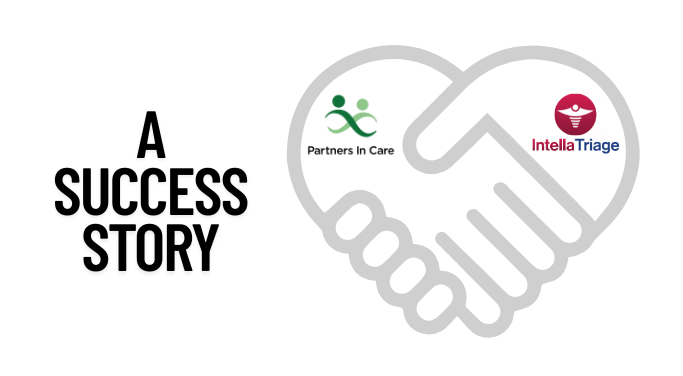This week, we spent time with Ashley Calloway, IntellaTriage Director of Clinical Operations, exploring creative ways to fill after-hours scheduling without compromising care or nurse sanity. We know hospice and home health agencies struggle to fill those on-call shifts while keeping their nursing staff happy, engaged, and rested enough to best care for patients.
Before leading the team at IntellaTriage, Ashley (a registered nurse) was the director of operations at a large hospice organization, so we asked her to share some best practices she developed around rotations of on-call staff. Below, Ashley shares six ways to fill after-hours rotations and keep your team happy.
1. Obtain your nurses’ buy-in when planning after-hours scheduling.
Give nurses a voice. When nurses have a say in the organization’s on-call strategy, patients are taken care of, and nurses are engaged. In terms of rotation, that could mean a set schedule with the buy-in of the nurses. Come together as a team with your nurses and discuss what makes sense for your organization. Ask yourself and your team, “How can we staff strategically and meet the needs of our organization and our patients and meet our nurses’ needs?” Then approach your after-hours scheduling in a way that allows nurses to pick on-call days that work best for their work schedule and personal lives. We found having a work-life balance and shared responsibility worked best for buy-in. If you have that, your nurses can make those on-call hours work and do it well.
2. Embrace shared partnership and transparent responsibilities.
`We found having a rotation of weekday on-call nurses and weekend on-call nurses worked well. However, it is essential that the nurses fully understand what the process entails to ensure buy-in. Balancing work and home life can weigh heavy in a nurse’s life, especially considering the realities of hospice nursing. When hiring new nurses, explain to them upfront what the on-call responsibilities and expectations are.
Create opportunities that foster partnership. Understanding that working all day as a case manager and then potentially being out all hours of the night was burdensome, we arranged on-call hours for our case managers slightly differently. Case managers had a partner they could count on and trust.
- Example: Case managers started on-call hours around 5 pm until – 9 pm. But then they had a partner who would pick up the on-call from that time forward so the case manager could get a good night’s rest. So, at 9 pm, a well-rested nurse arrived, ready to hit the ground running. These nurses worked well together and communicated clearly about “need-to-knows” across shifts.
3. Learn from failures along with your successes.
When you look at your retention, you may wonder: why are the best nurses I have, the nurses who families are requesting, why are they leaving in droves? Frequently it’s the on-call responsibility. After several different attempts, our organization found that an on-call model that allowed case managers to have some rest in the evening without that on-call obligation seemed to work best. But filling in a schedule around that involved definite trial and error. We received feedback from nurses and families. So we dove into patient satisfaction surveys and spent time understanding potential correlations between quality and on-call availability. And then, we made changes until we had the right fit.
Keep in mind: It is also important to remember what it’s like to be a nurse or case manager. It can be easy to forget how hard on-call rotation is in the hospice world reality. The most significant challenge in hospice occurs when a nurse who works with patients during the day loses a patient they had spent a year or more caring for. Those are tough days. And to expect a nurse to be their best on an after-hours shift felt unfair and didn’t provide the space to be successful. We worked to make adjustments around situations like that.
4. Think outside the box for after-hours scheduling.
Look at on-call rotations and responsibilities differently. If you have a new idea plus your nurses’ buy-in and can fill those hours nontraditionally, why not put this idea on paper and get these shifts covered? As long as you are meeting patients’ needs and the nurses are happy and engaged, you will have satisfied patients and families – which will drive a lot of what we measure as success in hospice: patient satisfaction, metrics, and data scores. Patients deserve a dignified, quality, end-of-life experience, and you can support that by providing nurses that are rested and fully engaged when they arrive at a home.
- Example: Weekends can be difficult, especially with high acuity patients and those actively dying. That is a challenging burden for nurses emotionally, physically, and mentally. However, weekday/weekend on-call rotation can work well without pushback. I once operationalized a rotation where nurses were off during the week if they worked the weekend – and they had off the following Monday. And then the case manager on Friday and off the next weekend. And it worked!
5. Meet the needs of the nurses so they can meet the needs of the patients.
COVID changed our healthcare community – nurses are carrying a lot. And the patient population has changed. Sicker patients, younger patients, and those who are dying with children and families – nurses relate to patients from those standpoints. Overall, the picture is different than it used to be – and we must keep that in mind. Meet your nurses where they are and provide appropriate support. Then when push comes to shove, you will still have the needed staff. These nurses will take the extra shift and go the extra mile for their patients. But with good on-call rotations and relief, they will also have the energy to do it and the emotional energy available to care and provide compassion. Nurses will partner better together when coverage is needed.
6. Outsource your after-hours to a nurse-first triage service.
You probably knew this was coming, but… outsourced nurse-based triage provides patient support over the phone, significantly reducing the number of on-call staff calls after-hours. Therefore, after-hours triage provides your staff with time for much-needed rest and recovery. In nurse-first models like IntellaTriage, triage nurses act as an extension of your team, providing a consistent experience for the patient, no matter where the encounter begins or ends. Often, in these models, triage nurses have care directives tailored through collaborative partnerships with your clinical team: triage nurses operate within your protocols and systems.
More about IntellaTriage
At IntellaTriage, we can reduce nurse burnout and staff turnover, improve patient satisfaction, and boost your bottom line. You can save on the cost of staffing your nurses for an internal call center and the time and effort needed to recruit, hire, manage and operate that service. We also capture all referrals quickly, increasing your topline revenue and your patient’s healthcare outcomes.
To learn more about IntellaTriage’s revolutionary approach to nurse triage service, contact us today.
Contact Us for a Consultation
Ready to optimize your triage process? Reach out to us today for a consultation tailored to your needs. Let’s elevate your patient care together.
More From The Blog
Recent data breaches are once again highlighting the urgency of securing protected health information (PHI). In March 2025, Yale New Haven Health System disclosed that an unauthorized third party accessed the personal data of nearly 5.6 million patients. Around the same time, Kentucky’s Cumberland County Hospital suffered a breach affecting more than 36,000 individuals, including [...]
Partners In Care - A Success Story. Partners In Care is a 5-star nonprofit provider of hospice, palliative, and home health services in Oregon. When they decided to reevaluate their after-hours care model, the goal was clear: prioritize patient care while supporting the nurses who make it all possible. Their home health and hospice nurses [...]
We have been made aware of a fraudulent job scam in which individuals are impersonating IntellaTriage and offering fake job opportunities. These scammers are emailing candidates directly and/or reaching out through platforms such as LinkedIn, posing as recruiters or hiring managers. Victims report being sent fraudulent checks with instructions to purchase equipment or gift cards. [...]









